Anonymity, Criminality, Fugitivity
Andrew Culp
Anonymity, criminality, fugitivity: these are the categories that orient Andrew Culp’s new manual for subtractive revolt in the 21st century. Unable to accept a liberal image of politics that views reconciliation as the destiny of all social conflict, yet equally unwilling to retreat into the interiority of the subject, A Guerilla Guide to Refusal presents the political as an asymmetrical “war by other means,” a war fought in anonymity against our cybernetic present. Drawing the lessons of guerilla warfare, Culp lays out a strategy of attack and withdrawal that mobilizes a wide range of sources, from the informal insurgency of everyday criminality to illegalist queers and feminist killjoys, to the fugitivity by which Black resistance has long worked to evade white surveillance. Like the “plateaus” of Deleuze & Guattari’s eponymous 1980 work, each segment of the Guide is designed as a freestanding fragment able to be read in the field and on-the-go.
The following selection gathers together three short introductions, one from each section of the book. Together, they offer a wide aperture into Culp’s new work, which appears with University of Minnesota next month.
Part of our ongoing series Desertions, which maps the manifold forms of treason, refusal, and defection from dominant images of community.
Other languages: Español
Manuals and guides inherently systematize.1 The present guide is no exception. In classic figure-ground fashion, guides attempt to describe a field, while offering a compendium of its conventional classified elements (edible plants, wild birds, or more recently, drones). In keeping with their practical nature, guides relate to their field technically as a strategic terrain with a variety of dimensions, each of which will affect outcomes. For instance, A Burglar’s Guide to the City surveys “lines of sight, potential hiding places, how shadows were cast at different times of day.”2 In short: the field offers a set of opportunities for expanding or diminishing power.
Anonymity
Even a cursory study of anonymity reveals something crucial: the importance of technical know-how. As anarchist Luigi Galleani said when denouncing the law, the power of anonymity “does not live in declarations,” but “when one can exercise it.”3 This makes its closest analytic ally a military-strategic approach to power, which understands anonymity through the cruelty of the hunt. On the one side, therefore, is the evolution of sovereignty, which can be traced from the prehistory of hunting cattle through the hunting of slaves, natives, Blacks, the poor, and foreigners to today.4 These predatory hunters (like the police or lynch mobs) develop technology of anonymity that enhance tracking, territorial accumulation, and confinement.5 On the other are those who evade capture. Their technologies of anonymity are practical devices born from very different circumstances. While the hunted are not constrained by the overriding need to identify, hold space, and fix things in place the same way as hunters, they are usually outmatched in material resources. Their technical intelligence is found in the hidden genius of the prison inventor, whose fabrications make something out of nothing.
The minoritarian guidelines of the game of war dictate that one should enter the field anonymously as a purely abstract figure. This is because to appear as a subject whose identity is known marks one for death before the battle has even begun. Through frogs’ eyes, cybernetics researchers weaponized sight, associating the capacity of identification with the act of hunting (for a target).6 The same basic algorithm that computers use for sorting images also guides missile navigation systems, criminal-gait-analysis profiling, and all facial recognition software.7 Figures of anonymity exploit the vulnerabilities created in these systems. The nameless narrator of Ralph Ellison’s Invisible Man, for instance, testifies to becoming incognito after dissolving completely into white pathologization, concealing his Blackness like a fog. And hackers create cramped spaces of autonomy out of a world they do not own, in which identification is used as a weapon to name, track, and neutralize their power.8 Anonymity thus serves as an aesthetic figure produced technostrategically by the field itself.


In his study of “improper names,” Marco Deseriis outlines how social landscapes that rely on names as a form of identification have been hijacked. Examples include noms de guerre, networked names, and other multiple-use names like the Luddites, Luther Blissett, and Jane of the Abortion Counseling Services of Women’s Liberation.9 His argument is that these have at least three important uses: first as a medium for subaltern social groups to find each other and conceal their actions; second as symbolic power for those whose voices are crowded out by isolation or exclusion; and third as a mode of subjectivation that evaporates identity into difference.10 Here, anonymity increases capacity by substituting subjection for an ever-shifting strategic position.
From the perspective of subtraction, the underground is not distant, esoteric, or hard to access. There are other spatial means to describe the terrain from which anonymity springs forth, as layered on top of this world, an expansion of what is already there, loops in its networked fabric, holes in a biopolitical fabric, or vacuoles of noncommunication. Each of these provides a different strategic angle of approach against the new Moloch created by cybernetics, which tried to mitigate the disaster of industrialization through the promise of connecting to anything at any time.11 But in the process, it further proletarianized the world by concealing control behind slick telegraphic surfaces and sequestering away labor in an intensified global division.12 Here, nature becomes pure spectacle through an environmental logic born out of the precise cybernetic thinking that produced the problem. The only resolution is to treat it as a new terrain of conflict.13 [...]
Criminality
Straight society is held together by lines. Sovereign among them are the straight lines of filiation hearkening back to monarchic blood lines.14 These are mixed now with the molecular lines of the nuclear bio-family. They are joined by legal lines of the nationalist state, which treat citizens like an extended family. With the advent of a digital reticular society, the lines do not disappear; they simply proliferate as relations are flattened to connections drawing everyone and everything together into a single network. The history of queerness is the chronicle of being incompatible with these lines, and this antihistory is passed down through gossip or bawdy tales of the lives of those “social enemies” who contribute nothing to society.15 This is how queerness substitutes linear filiation for an alliance with the underworld. And in turn, it opens up an avenue for queerness not to refute its association with criminality, but instead to refashion it into the threats of other illegalists: the economic illegalism of machine breakers, the social illegalism of forming underground associations, the civil illegalism of rejecting marriage, and the political illegalism of rioters.16
The era of the homophile promotion of “the harmless gay” immediately ceased when the state reinforced its reactionary line against queerness in the 1960s. The evasively fluid genders and sexualities caught up in its dragnet were urgently radicalized. Its ranks included Marsha P. Johnson and Sylvia Rivera of the Street Transvestite Action Revolutionaries who fought “pig power” as sex-worker mothers through a new version of queer kinship.17 They found themselves backed by an intelligentsia typified in Jean Genet, who was “abandoned at birth…a vagabond, male prostitute, and thief who had spent most of his youth in prison” and who described the questions he received about the origins his sexuality as “a pointless diversion.”18 These groups flip the last decade of Richard von Krafft-Ebing’s pathologizing etiological questions (“how did you end up as a homosexual? Was it dad’s fault or mom’s?”) into political interrogations of how universal desire was forced into the straitjacket of compulsory heterosexuality.19
An essential contribution of queerness to the politics of the underground is the aesthetic sensibility of opacity. Most practically, it is a rejection of the liberal pact of the closet, which promises liberation in exchange for confessional declarations of gender or sexual orientation. Conceptually, it is bolstered by the queer refusal of interiority, which dismisses the self (or its past) as some hidden well of truth waiting to be discovered through the “work” of introspection (as the etiological approach has long demanded). “Do not ask who I am and do not ask me to remain the same,” Michel Foucault once wrote, “leave it to our bureaucrats and our police to see that our papers are in order.”20
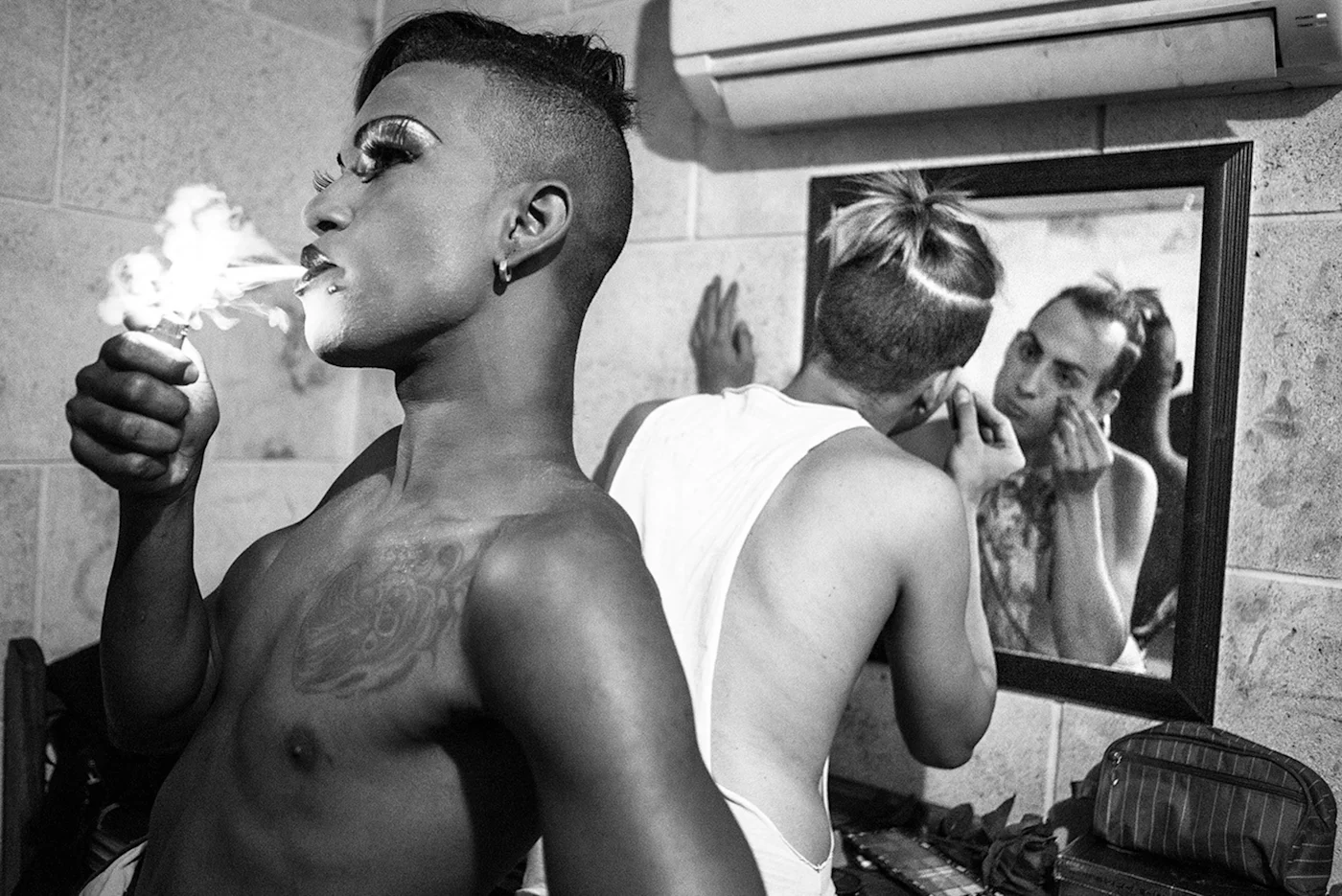
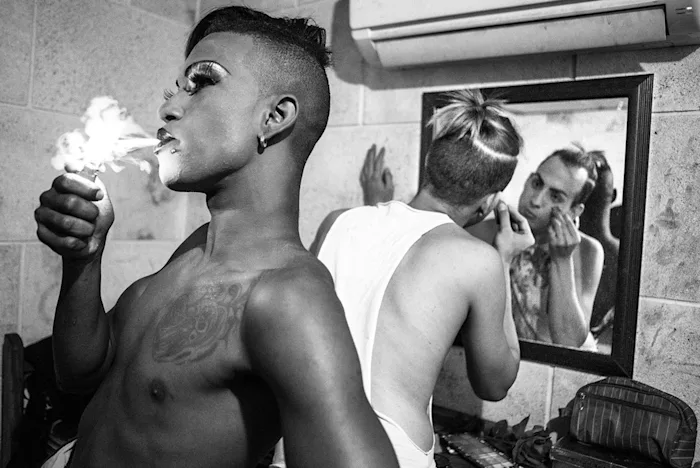
Echoing Foucault’s willfully criminal desire for opacity, queers need not draw lines between good gays and “perverts,” the abstinent and “junkies,” discrete lesbians from butches, and dysphorics from “gender terrorists.”21 Groups like the Homosexual Revolutionary Action Front (FHAR) revolted against the goal of winning legal protections or forms of social recognition that demand a well-cultivated identity. They instead advanced sexuality not as a “revolutionary motor,” which is only as far as the straight left was willing to go, but as a model of resistance that called forth the term “expanded homosexuality,” which refused to reduce their existence to one more identity living peacefully alongside others (“the homosexual”) or to limit their struggle to “sexuality” as one isolable dimension of the social. Their sexuality is, rather, the disruption of the whole political field through (“antisocial”) relation.22
Going back at least as far as colonialism, the demand for transparency has served as “the bottom of the mirror in which Western humanity reflected the world in its image.”23 Within this framework, the modern criminalization of queers’ “every gesture, statement, expression, and opinion” has become a screen upon which straights project their fantasies, from the police officer looking for an excuse to rough someone up to a colleague looking to sink their hooks into you.24 Opacity may have started as a survival strategy, but it quickly morphed into a masked game of concealment, subtext, and working undercover. As Foucault does by substituting the law with war, opacity’s tactics exchange the standpoint-neutral promises of universal transparency for a partisan strategy of disclosure that follows Sun Tzu’s maxim that “all warfare is based on deception.”25 The conflict has only accelerated under surveillance, as quantitative researchers knit together sexuality, race, and criminality through cybernetic means.
Two decades after the FHAR, Leo Bersani would echo their concerns by writing that “never before have gay men and women been so visible.”26 Its result? “The social project inherent in the nineteenth-century invention of “the homosexual” can perhaps now be realized: “visibility is a precondition of surveillance, disciplinary intervention, and, at the limit, gender-cleansing.” Though queers have held a suspicion of identities as found in the distrust of scientific motives, an eye to the exclusionary effects of identity, a mistrust in any internal essence of sexuality, and hyperawareness of the constructed nature of subjects, all of these efforts, “while valuable,” have largely had an assimilative rather than subversive effect. Such assimilation can be seen in those who abandon visions of revolution, resigning themselves to the narrow political ambitions of “the micropolitics of local struggles for participatory democracy and social justice.” Bersani’s proposal is not to “a return to the immobilizing definition of identity,” nor even “resistance to normalizing methodologies,” but instead to think of homosexuality “as truly disruptive—as a force.” One force in particular: a “revolutionary inaptitude...for sociality.” Its mandate is not the liberal pluralist tolerance for diverse lifestyle, but rather “the politically unacceptable and political indispensable choice of an outlaw existence.”
Whereas Queer Nation declared in the 1980s that “we are everywhere,” the new millennium brought about the criminal queers of Bash Back! who turned their backs on winning respectability through visibility. In response to being queer-bashed, they bashed back through “bar fights, outrunning lynch mobs, glamdalization, attacking the homes of heterosexist murderers, outright chaos, alleged lootings, theory discussions, self-defense tips, social gatherings, beat-downs, the acquisition of large quantities of pepper spray, and attempts at sexual liberation.”27 It is in these gender outlaws that queerness and criminality have always coincided.28 Their classrooms are found in the walk from the flop pad to the scene of an incident. The first day of their history courses open with “Stonewall was a riot.” Their survey textbook, What is Gender Nihilism?: A Reader, is made to be encountered “adrift in the world, in coffee shops and libraries, riding on buses and snuck into schools,”29 And the editors of their flagship journal Bædan (Journal of Queer Nihilism, of Queer Heresy, of Queer Time Travel...) declare that “a non-identitarian, unrepresentable, unintelligible queer revolt will be purely negative, or it won’t be at all,” as “identity politics, platforms, formal organizations, subcultures, activist campaigns (each being either queer or anarchist) will always arrive at the dead ends of identity and representation.”30 [...]
Fugitivity
What the world says to Blacks is “turn white or disappear.”31 The aesthetic demand was materialized in early American “lantern laws,” which required all Blacks to illuminate themselves at night (non-compliance punishable by the spectacle of public torture) in an effort to supervise their movements to prevent insurrection.32 The opening injunction can be stated more generally: submission or domination, absolute exposure or complete annihilation, infinity or nothingness. To be clear, the command is not the limited demand of “your land or your life” or “your labor or your life,” in which dispossession is temporary and can be reversed through struggles for sovereignty or self-possession.33
What makes slavery and its afterlives so gratuitously violent is its unconditionality. Anti-Black violence attempts to make real a metaphysical point of no return: limitless surrender secured through ontological terror, waged against every fiber of Black being until there is nothing left to recover, no land, no body, no self.34 The architecture behind this transformation is the white slave ship, a machine into which the bodies of humans enter but from which only the cargo of flesh leaves.35 The operations of the ship’s hold was not a one-time event, but a still-unfolding disaster of containment grinding away in streets, offices, homes, prisons, and carceral landscapes not yet invented.36
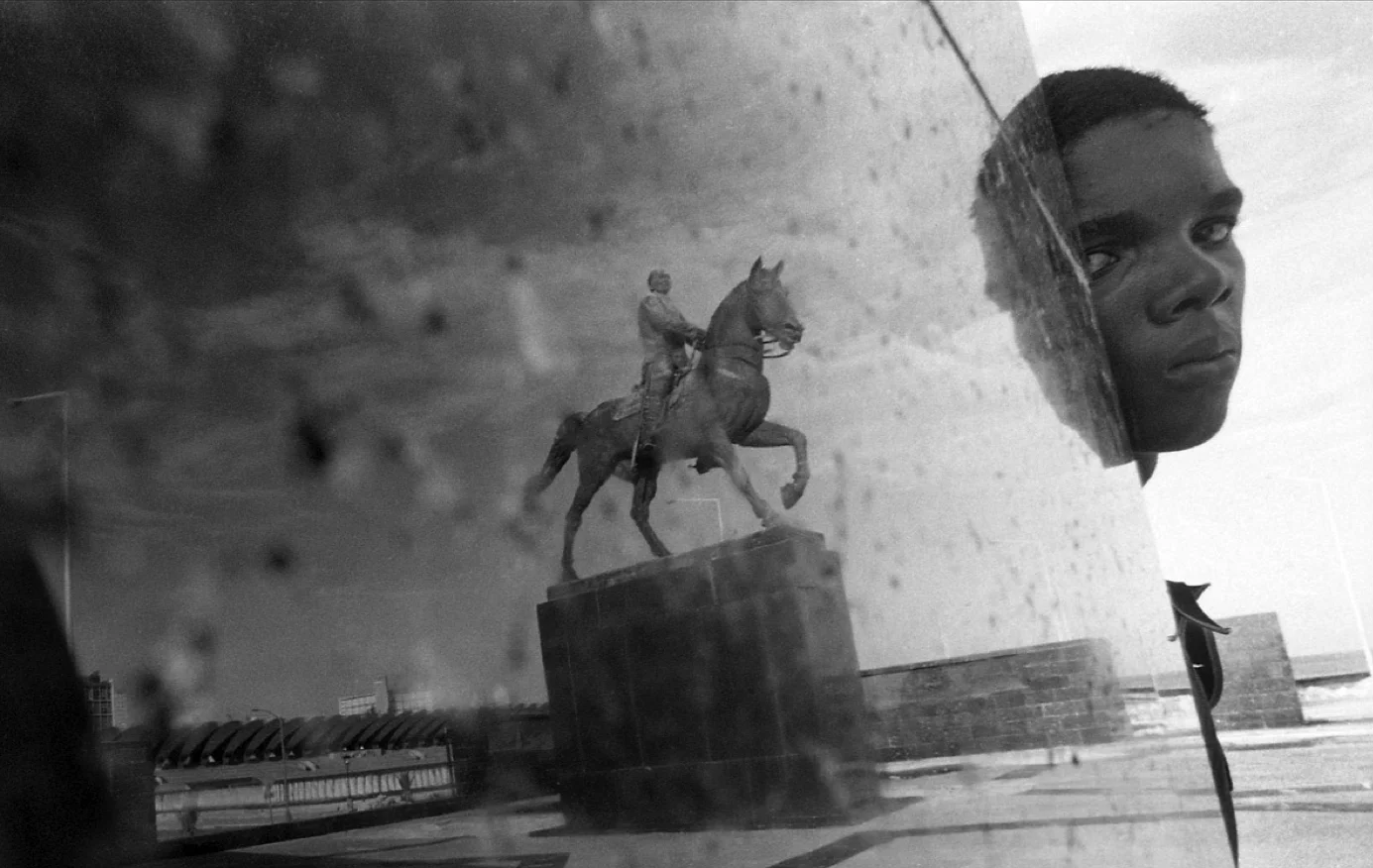
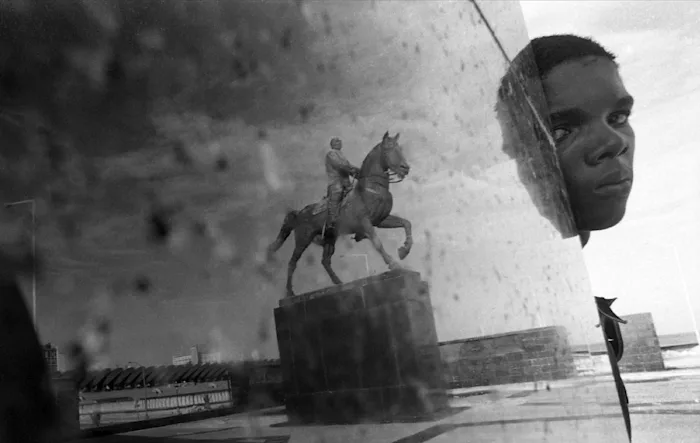
By design, the activity of whiteness is the irrevocable severing of a slave from any foundation to a way of life. So what happens when there is no possible redress, as the path to being made whole has been irredeemably lost? This is a “problem” that can never be resolved through ethics (as humanism is premised on those free from bondage, once again using the slave as a conceptual scaffold to support the emancipation of others), culture (its terror is hidden by “cultural seeing”), or politics (a result of more vigorous action or hard work).37 Rather, this intractable problem — the problem of “X” — is how the world keeps Blackness in a suspended state of captivity.38
Fugitivity explores a “capacity under captivity” that may not objectively exist but still subsists or insists.39 Escaped-slave maroon communities offer both a model of association and a method for understanding fugitivity (as marronage means flight).40 As a method, it means first throwing off basic categories, such as “community,” leaving behind only furtive instances of “struggle, shared pleasures, transient forms of solidarity, and nomadic, oftentimes illegal, forms of association.”41 The maroon’s escape spatially marks the crossroads of two movements. The first, the constant flow away from the plantation, best described as a “constant trickle, like water out of a leaking container.”42 The second, the cultivation of a wilds that creates “a very concrete rupture” that leaves “no place for compromise.”43 Even then, there is a risk of it simply being a “fantasy of flight” that prevents thought from staying “in the hold of the ship.”44 This is doubly true for whites, who project dreams of redemption onto Blackness alongside their fears, as if it were a refuge or invigorating tonic.
History is bursting with examples of whiteness laying claim to Blackness, not satisfied to simply possess the flesh of Blacks but feeling a need to collect their bodies of work as well. Hence it is worth mentioning my own position. I do not see myself as a maroon whose captivity implies slavery.
In a word, the trajectory I follow is the trajectory of “self-abolition.”45 As Kieran Aarons notes, Black and white self-abolition do not converge in a point of interaction, but separate out into parallel lines, a separation which prevents “any model of solidarity premised on reciprocal recognition, on empathy, sympathy, or charity,” or even “common interests.”46 The tenuous commonality between the two is found in an absolute refusal of sovereignty and a hostility toward its world. To maintain the delicate balance of this mutual coincidence, I make no claim on Black life. But rather, through the principles of guerilla-without-guerrillas, I reveal and attack the white social infrastructure that confines Blackness.47 The subsequent guerrilla techniques include the masking of Black faces in images to prevent their apprehension, the construction of an underground network for circulating material away from prosecutorial eyes, attacking the putative neutral evidentiary mode of photography, and striking against the white spectacular economy of exposure.
A Guerilla Guide to Refusal is now out with University of Minnesota Press.
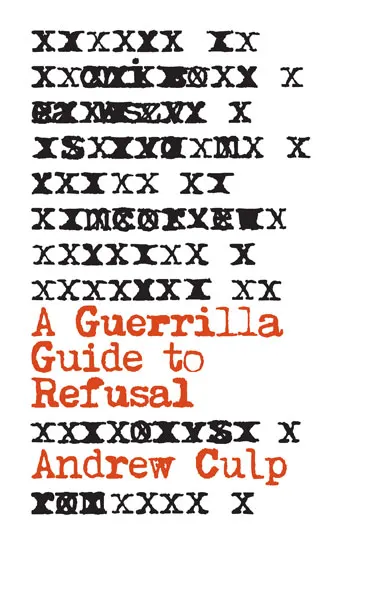
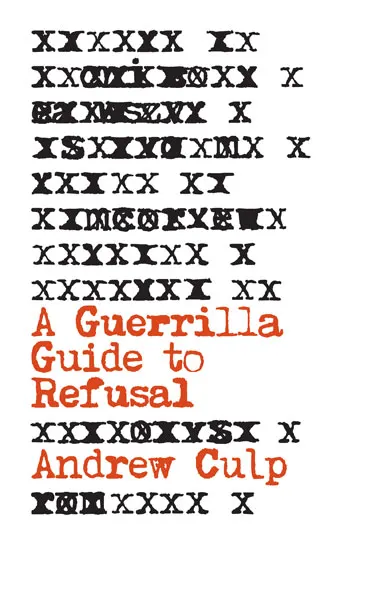
Images: Raul Cañibano
Notes
1. Shannon Mattern, “Cloud and Field,” Places Journal, August 2016. Online here.↰
2. Geoff Manaugh, A Burglar’s Guide to the City, McClelland and Stewart, 2016, 9.↰
3. Antonio Senta, Luigi Galleani: The Most Dangerous Anarchist in America, trans. Andrea Asali and Sean Sayers, AK Press, 2019, 19.↰
4. Grégoire Chamayou, Manhunts: A Philosophical History, trans. Steven Rendall, Princeton University Press, 2012.↰
5. Chamayou, 150.↰
6. Orit Halpern, Beautiful Data: A History of Vision and Reason Since 1945, Duke University Press, 2014, 199–207.↰
7. On this point, see the films of Harun Farocki.↰
8. McKenzie Wark, A Hacker Manifesto, Harvard University Press, 2004, 4–5, 274.↰
9. Marco Deseriis, Improper Names: Collective Pseudonyms from the Luddites to Anonymous, University of Minnesota Press, 2015, 8–18.↰
10. Deseriis, 4.↰
11. McKenzie Wark and Ali Dur, “New New Babylon,” October no. 138, 2011, 43–45.↰
12. Wark and Dur, 43–47.↰
13. Wark and Dur, 46.↰
14. On Western myths of filiation as constitutive of the-world-as-we-know-it, see “Expanse and Filiation,” in Éduoard Glissant, Poetics of Relation, trans. Betsy Wing, University of Michigan Press, 2010, 47–62.↰
15. Miichel Foucault, The Punitive Society: Lectures at the Collège de France, 1972–1973, ed. Bernard E. Harcourt, trans. Graham Burchell III, Palgrave Macmillan, 2015, 32–33.↰
16. Foucault, 151.↰
17. Samuel Galen Ng, “Trans Power! Sylvia Lee Rivera’s STAR and the Black Panther Party,” Left History 17, no. 1, 2013, 21–22; Susan Stryker, Transgender History, Seal, 2008, 79.↰
18. William Haver, “The Ontological Priority of Violence: On Several Really Smart Things About Violence in Jean Genet’s Work,” polylog, 2004, online here; Jean Genet, The Declared Enemy: Texts and Interviews, ed. Albert Dichy, trans. Jeff Fort, Stanford University Press, 2004, 148.↰
19. Paul B. Preciado, “Anal Terror: Notes on the First Days of the Sexual Revolution,” Bæden, no. 3, 2015, 152; See also the queer Autonomia book by Mario Mieli, Towards a Gay Communism, trans. David Fernbach and Evan Calder Williams, Pluto, 2018.↰
20. Michel Foucault, The Archeology of Knowledge, trans. A. M. Sheridan Smith, Pantheon, 1972, 17.↰
21. Preciado, “Anal Terror,” 154.↰
22. Preciado, 153–54.↰
23. Glissant, Poetics of Relation, 111.↰
24. See David M. Halperin, Saint Foucault: Towards a Gay Hagiography, Oxford University Press, 1995, 30, for a Foucauldian reworking of Eve Sedgwick’s monumental epistemology of the closet.↰
25. Nicholas de Villiers, Opacity and the Closet: Queer Tactics in Foucault, Barthes, and Warhol, University of Minnesota Press, 2012, 5–7.↰
26. Leo Bersani, Homos, Harvard University Press, 1996, 11.↰
27. Fray Baroque, “Introduction,” in Queer UltraViolence, ed. Fray Baroque and Tegan Eanelli, Ardent, 2011, 10.↰
28. Reina Gossett, Eric A. Stanley, and Johanna Burton, eds., Trap Door: Trans Cultural Production and the Politics of Visibility, MIT Press, 2017; Dean Spade, Normal Life: Administrative Violence, Critical Trans Politics, and the Limits of Law, Duke University Press, 2015; Zach Blas, “Opacities: An Introduction,” Camera Obscura 31, no. 2, 2016, 149–53.↰
29. What Is Gender Nihilism? A Reader, 2016, iii–iv.↰
30. Editorial, “The Anti-Social Turn,” Baedan: Journal of Queer Nihilism, no. 1, 2012, 17.↰
31. In making this statement, Frank B. Wilderson III notes that it is his paraphrase of Frantz Fanon; see Wilderson and Zamansele Nsele, “Part III: Afropessimism and Rituals of Anti-Black Violence,” Mail & Guardian, June 2020, online here.↰
32. Simone Browne, Dark Matters: On the Surveillance of Blackness, Duke University Press, 2015, 76–83.↰
33. Wilderson and Nsele, “Part III: Afropessimism”; Jared Sexton, “The Vel of Slavery: Tracking the Figure of Unsovereign,” Critical Sociology 42, no. 4–5, 2014, 1–15; Saidiya V. Hartman, Scenes of Subjection: Terror, Slavery, and Self-Making in Nineteenth-Century America, Oxford University Press, 1997, 66. For the “cruel mockery” of self-possession as seen through freedom papers, see Calvin L. Warren, Ontological Terror: Blackness, Nihilism, and Emancipation, Duke University Press, 2018, 99–106.↰
34. Warren, Ontological Terror, 26–37; Sexton, “Vel of Slavery.”↰
35. Hortense Spillers, Black, White, and In Color: Essays on American Literature and Culture, University of Chicago Press, 2003, 214–15.↰
36. Christina Sharpe, In The Wake: On Blackness and Being, Duke University Press, 2016, 13–17.↰
37. Frank B. Wilderson III, Red, White, and Black: Cinema and the Structure of U.S. Antagonisms, Duke University Press, 2010, 17; Spillers, Black, White, and In Color, 207; Warren, Ontological Terror, 90.↰
38. Nahum Dimitri Chandler, X—The Problem of the Negro as a Problem for Thought, Fordham University Press, 2014).↰
39. Marquis Bey, Them Goon Rules: Fugitive Essays on Radical Black Feminism, University of Arizona Press, 2019, 72 (citing an unspecified work by C. Riley Snorton).↰
40. Neil Roberts, Freedom as Marronage, University of Chicago Press, 2015, 6.↰
41. Hartman, Scenes, 61.↰
42. Alvin O. Thompson, Flight to Freedom: African Runaways and Maroons in the Americas, University of the West Indies Press, 2006, 65.↰
43. Sylviane A. Diouf, Slavery’s Exiles: The Story of the American Maroons, New York University Press, 2016, 309.↰
44. Wilderson, Red, White, and Black, xi.↰
45. Kieran Aarons, “No Selves to Abolish: Afro-Pessimism, Anti-Politics, and the End of the World,” Hostis 2, 2016, 103–27.↰
46. Aarons, 124.↰
47. The legacy of the white underground’s contribution to other struggles is mixed (such as the Weather Underground Organization), largely complicated through Marxological theories of popular sovereignty, nationalism within anti-imperialism and decolonization, and the socialist voluntarism of white-skin privilege. I have omitted a discussion of them here, as it would shift the balance in a self-serving direction.↰